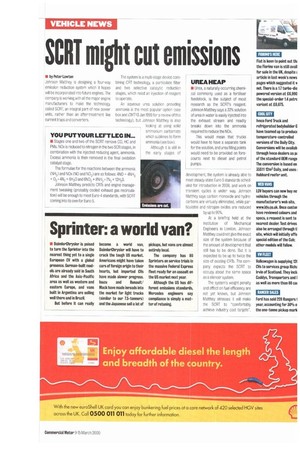SCRT might cut emissions
Page 17

If you've noticed an error in this article please click here to report it so we can fix it.
• by Peter Lawton Johnson Matthey is designing a four-way emission reduction system which it hopes will be incorporated into future engines. The company is working with all the major engine manufacturers to make the technology, called SCAT, an integral part of new power units, rather than an after-treatment like current traps and converters. The system is a multi-stage device combining CRT technology, a particulate filter and two selective catalytic reduction stages, which need an injection of reagent to operate.
An aqueous urea solution providing ammonia is the most popular option (see box and CM 7-13 Jan 1999 for a review of this technology), but Johnson Matthey is also looking at using solid ammonium carbamate which sublimes to form ammonia (see box).
Although it is still in the early stages of development, the system is already able to meet steady-state Euro-5 standards scheduled for introduction in 2008, and work on transient cycles is under way. Johnson Matthey says carbon monoxide and hydrocarbons are virtually eliminated, while particulates and nitrogen oxides are reduced by up to 90%.
At a briefing held at the Institution of Mechanical Engineers in London, Johnson Matthey could not give the exact size of the system because of the amount of development that still has to be done. But it is expected to be up to twice the size of existing CRTs. The company expects the SCAT to occupy about the same space as a silencer system.
The system's weight penalty and effect on fuel efficiency are not yet known, but Johnson Matthey stresses it will make the SCAT to "comfortably achieve industry cost targets".








































































































